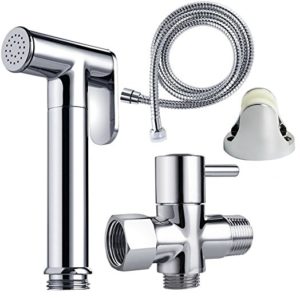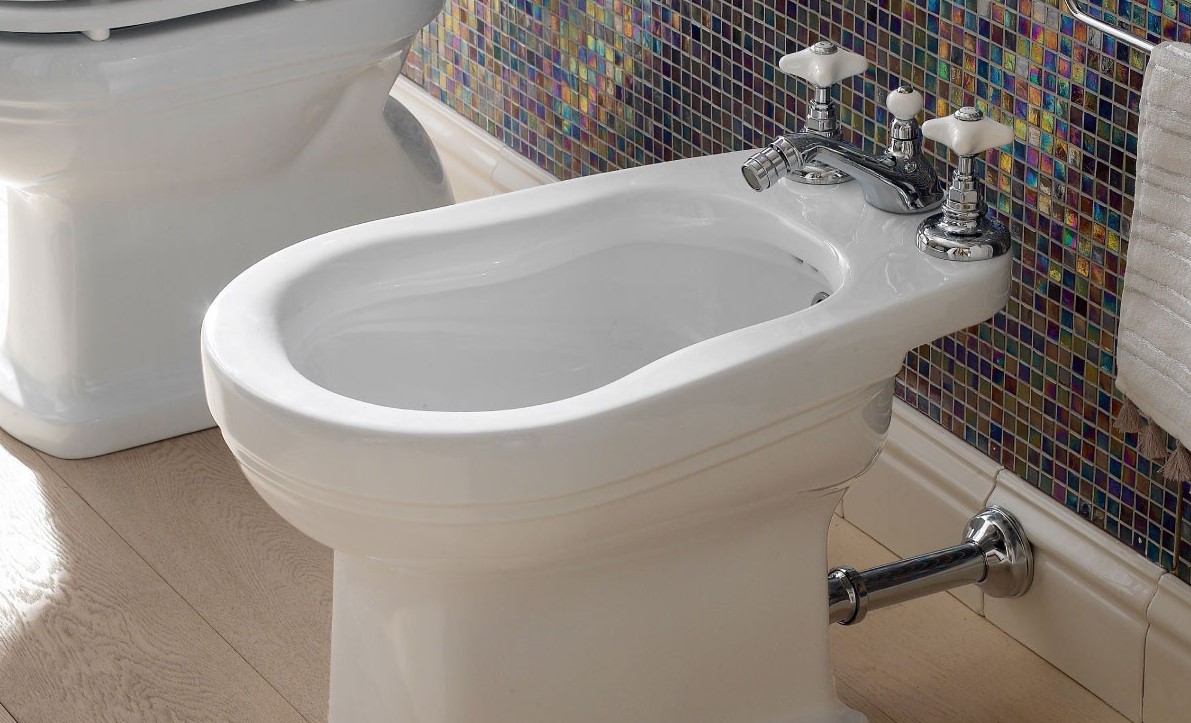Just like most plumbing malfunctions, a leaking bidet can be stressful. If it’s not the water drip sound pissing you off, it’s the water wastage and accruing utility bill to worry about.
Not to mention you can’t use some plumbing features until you fix the leak. So, it would help a lot if you knew a thing or two about how to fix a leaking bidet.
Our team has come up with a comprehensive troubleshooting guide to help you solve the problem. We will discuss the causes of bidet leaks, their solutions, and a few prevention measures you can utilize. Keep reading to learn all the details.
What causes a bidet to leak?
First, the factors that cause bidet leaks are:
- Dirty filter
- Loose valve
- Water overflow in the tank
- Broken hose
- Faulty nozzle
Before we get into the details, it’s important to note that the factors may vary depending on the bidet you’re using. The different types of bidets include:
- Stand-alone bidets
- Bidet toilet seats/add ons
- Portable or travel bidets
- Spray or handheld bidets
Some of the tools you’ll need for the job include:
- Screwdriver
- Wrench
- Teflon tape
- Metal clamps
- Water supply hose
- T-valve
Read Also: How to remove limescale from a showerhead?
How to stop a bidet from leaking
Now that everything is ready, let’s get to the important part of fixing a leaking Bidet.
1. The standalone bidet
Follow these steps to fix a standalone bidet:
Step 1: Turn the water source off
To avoid excess loss of water and also make it easy to fix the leaking bidet problem, you must turn off the water. There are two ways to do this:
- Turn off the valve connected to the toilet: This will prevent the water attached to the bidet and toilet from flowing.
- Turn off the main water valve for the home: This will curb water flow through any of the plumbing features in the home.
Flush the bidet several times to eliminate the water.
Step 2: Check the drain
The drain is responsible for most of the bidet leaks. So, it’s only right that you start your inspection there. Look for foreign objects that might be stuck inside the drain or accumulated debris.
Remove the pipe by unscrewing the nuts with trenches then clean inside. Get a wire brush to clean the entire length of the pipe. Once you’re done, screw the nuts back to close the pipe. You can turn on the water and check if the leak is fixed.
Step 3: Check the supply hose

Inspect the hose supplying water to the bidet to see if it’s loose-fitting or damaged. Also, watch out for kinks. You can start with the joints and move to the other parts.
Make sure you tighten the loose parts, and if you find any small leaks, use a plumbers tape to patch up the affected area. But when you notice more than one or two leaks, it’s best to replace the supply hose.
Step 4: Check the strainer
Strainer issues that might lead to bidet leaks are the accumulation of debris and using the wrong strainer.
The solutions, in this case, are as simple as cleaning your strainer or replacing it with the right one for your bidet.
NOTE: When installing a new strainer, put extra caulk around the edges to enhance water leak prevention.
Step 5: Check the T-adapter
After the drain and supply hose, you need to look at the T-adapter. This is another part that’s highly prone to leaks. This could be because of:
- Cross-threaded connection
- Loose connections
- Extremely tight connections
- Damaged, badly-fitted, or missing washer
To fix the leaking bidet at the T-adapter, open it and confirm that the right washer is installed properly and has no damage. If it’s upside down, flip it and those with deformities must be replaced immediately.
Read Also: Best automatic soap dispensers for home
Once the washer is set, look for signs of cross-threading. You can easily tell if you notice the connection is crooked if it takes a few turns for the screws to lock. This prevents the T-adapter from locking properly thus leading to water leaks.
To solve the cross-threading issue, re-thread the connection and ensure the screws remain straight. You can use teflon tape to achieve better results. If the threads are damaged then you should get replacements.
If the bidet T-valve is leaking still, your connections might be loose. Simply hand-tighten the screws to stop the leaks. If you’re not strong enough, use a wrench.
Be careful not to overtighten the connection as it could put pressure on washers and damage or move them out of position—resulting in water leaks. Also, it can damage the threads.
Loosen the connection and your problem is solved.
2. Bidet toilet seats/add ons
When it comes to the toilet seat bidets, expect the leak to occur in the nozzle area or water supply hose and its connections. This makes it easy to diagnose and solve.
For one, the bidet nozzle leaking is mainly because of a loosely attached bowl. So, all you need to do is fix it by attaching it properly and the leak stops.
In case you notice any damage to the nozzle, order a new one and replace it right away.
Secondly, this bidet has a filter that blocks dirt from flowing through. Unfortunately, the dirt accumulates and could in turn prevent water passage. As a result, the water overflows and starts to leak.
Your solution is to use a screwdriver to open the filter cage and dump the accumulated debris. Wash the filter under running water and put it back.
3. Hand-held bidet
This is another popular bidet. It could also leak from all the areas mentioned above. However, the part to check is the spray head. A leak from this part can be messy, especially when the water sprays all over the place.
The problem can be a missing/defective washer or a bad nozzle. To solve both issues, install a new washer and nozzle respectively. If the leak doesn’t stop then the whole header is faulty and should be replaced.
The best way to deal with a leaking bidet is to fix it immediately to prevent the situation from escalating. We hope the solutions above help you out. If the leak hasn’t stopped, chances are the bidet has deep internal issues that will require the expertise of a professional plumber to solve.
Read Also: Handheld shower heads that increase water pressure

